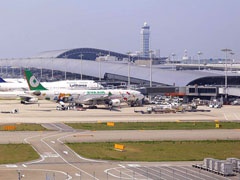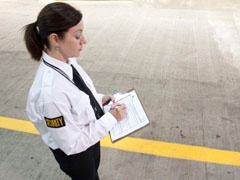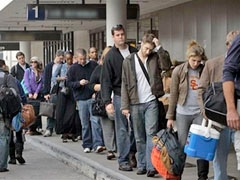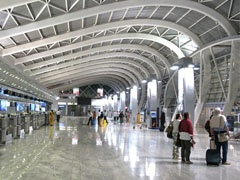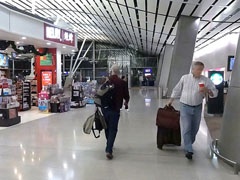Aviation is an extraordinary industry powered by the cooperation of countless companies and people. Many of these same people aspire to keep air transport safe and running smoothly.
Unfortunately though, aviation has always been a target for those wanting to bring attention to their own cause by carrying out harm to the industry. It’s only a matter of time before the next attack or attempt occurs. That’s why the aviation industry must always be vigilant of the following threats.
Read More
Topics:
Aviation Security,
Trends,
Security Threats,
Transportation
For those overseeing security training compliance of employees, there are a few things you must know at any given time. Don’t be caught off guard when an auditor inspects your facility and training records.
Make sure you understand these five key pieces of information related to your compliance training program. It will prepare you when a compliance audit is conducted.
Read More
Topics:
Audit Preparation & Compliance,
Aviation Security,
Cargo Security
The United Kingdom's vote to leave the European Union, popularly known as Brexit (British Exit), was decided on June 23rd 2016. More than 33 million people came out to vote on the referendum with 51.9% voting in favor of the change.
The UK now needs to notify the EU of its intention to formally leave by filing under Article 50 of the Lisbon Treaty. Finalization of this separation could take up to 2 years or more. How will Brexit impact the aviation industry in the short and long run?
Read More
Topics:
Trends,
Transportation,
Current Events
There are many threats that exist in our world. One of which is terrorism. Terrorism is the use of violence and intimidation in the pursuit of political, social, or criminal gains. International terrorism and domestic terrorism both fall under this umbrella.
Recently though, it seems as if domestic terrorism has been on the rise. We hear more and more about homegrown terrorists causing devastation within their own nation. The threat is all too real and it’s happening right here in your own country.
Read More
Topics:
Trends,
General Security,
Ports & Borders,
Critical Infrastructure,
Security Threats,
Transportation
Security screener shortages and increased passenger volume at the airport - doesn’t make for a good combination, does it. Unfortunately, that’s exactly what the US Transportation Security Administration (TSA) is facing at the moment.
The recovering economy and low price of airfare has boosted the volume of passengers flowing through airports. This uptick is wreaking havoc on the busiest US airports including Atlanta, Chicago, Dallas, and New York since passengers are unable to get through security fast enough. The strain is being felt on everyone including passengers, airports, and airlines.
Read More
Topics:
Aviation Security,
Transportation,
Current Events
Many companies rely on X-ray systems to screen items arriving at or passing through their facility. The items these security screeners typically observe varies depending on the industry and whether belongings, cargo, or mail are being screened. For instance, screeners inspecting visitor belongings at a courthouse would experience different throughput than those inspecting passenger luggage at an airport.
Because of this, some companies would prefer to customize simulator training by adding their own X-ray images. To do that, an image capture is required. Here are some best practices for conducting your own in-house X-ray image capture.
Read More
Topics:
Training & Development,
Ports & Borders,
Critical Infrastructure,
Transportation
Most airports have numerous screening checkpoints situated in different areas of its facility. Passenger, cabin baggage, hold baggage, cargo, and non-passenger screening are typical checkpoints.
These airport checkpoints screen and process people, belongings, and cargo nonstop to prevent the entry of prohibited and dangerous items. Let’s briefly run through the different types of security screening checkpoints typically found at airports.
Read More
Topics:
Aviation Security,
Cargo Security,
Transportation
For security screeners, being able to identify threats and prohibited items under X-ray is an important responsibility. To aid in this task, some may agree that learning how to identify everyday objects is almost equally important since most items inspected are innocent. Think about it. How beneficial would it be for security screeners to recognize and clear innocent everyday items quickly and efficiently? A rapid check over of the X-ray image is all it would take for a skilled screener. That’s why practice recognizing everyday objects alongside threats and prohibited articles is encouraged.
Read More
Topics:
Security Training,
Aviation Security,
Training & Development,
General Security,
Cargo Security,
Ports & Borders,
Critical Infrastructure,
Transportation
Brussels was rocked by terrorism this week. On the morning of Tuesday, March 22nd, two explosions hit inside Zaventem international airport and a third just a few miles away at Maelbeek metro station. The attacks have tragically left at least 30 people dead and hundreds wounded. These attacks come days after Paris terror suspect Salah Abdeslam was captured in the suburb of Molenbeek by Belgian authorities. It is believed the two incidents are related.
Read More
Topics:
Aviation Security,
Critical Infrastructure,
Security Threats,
Transportation,
Current Events
Airports operate multiple checkpoints for the different items and people passing through. These checkpoints aim to keep threats, drugs, and prohibited items out of secure areas. Perhaps the most recognizable airport screening checkpoint is one experienced by travelers firsthand – the passenger screening and cabin baggage screening (CBS) checkpoint. This checkpoint processes millions of passengers daily and as a result, collects a fair amount of prohibited items. Let’s examine some commonly confiscated items seized by airport security at the passenger checkpoint.
Read More
Topics:
Aviation Security,
Trends,
Security Threats,
Transportation

